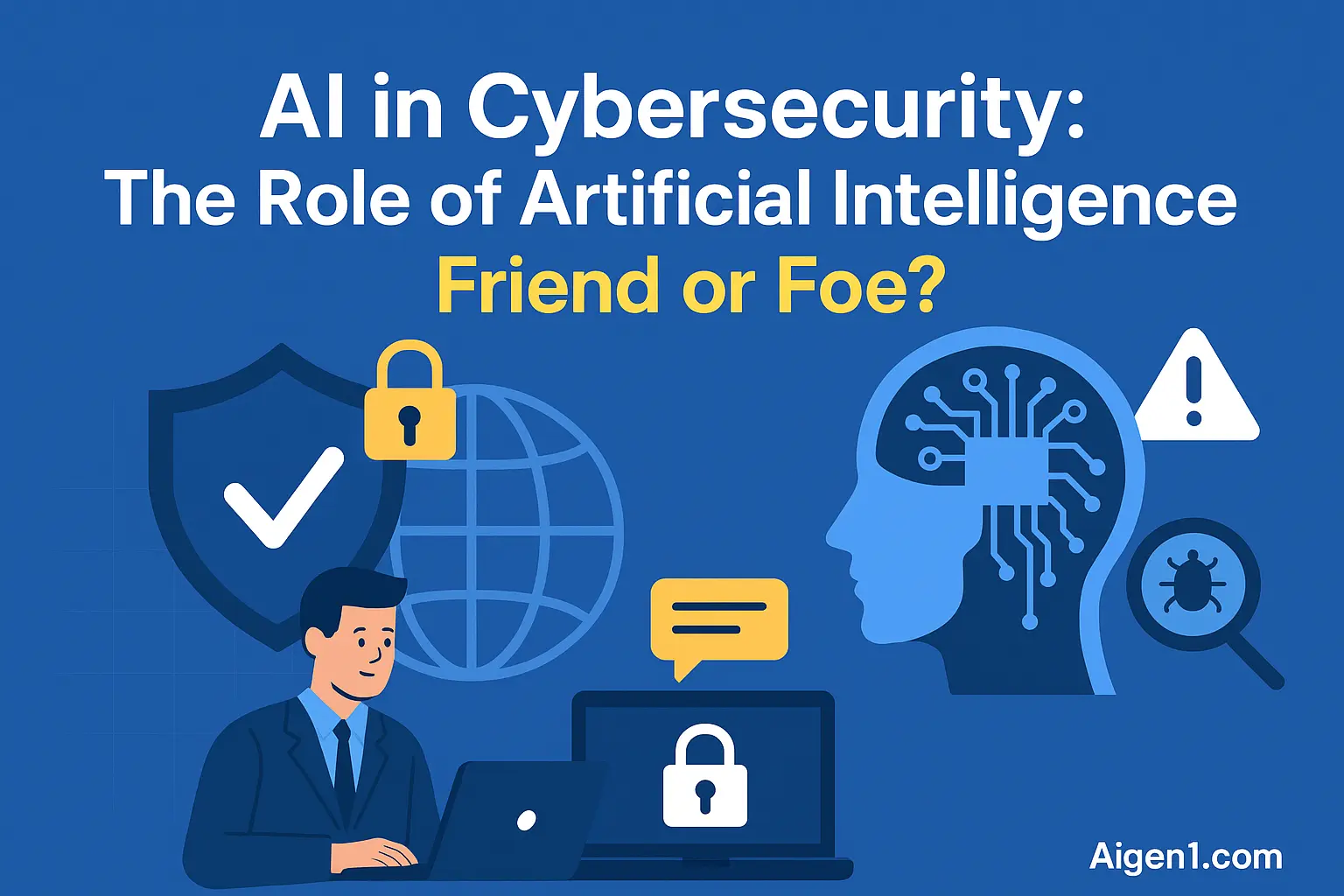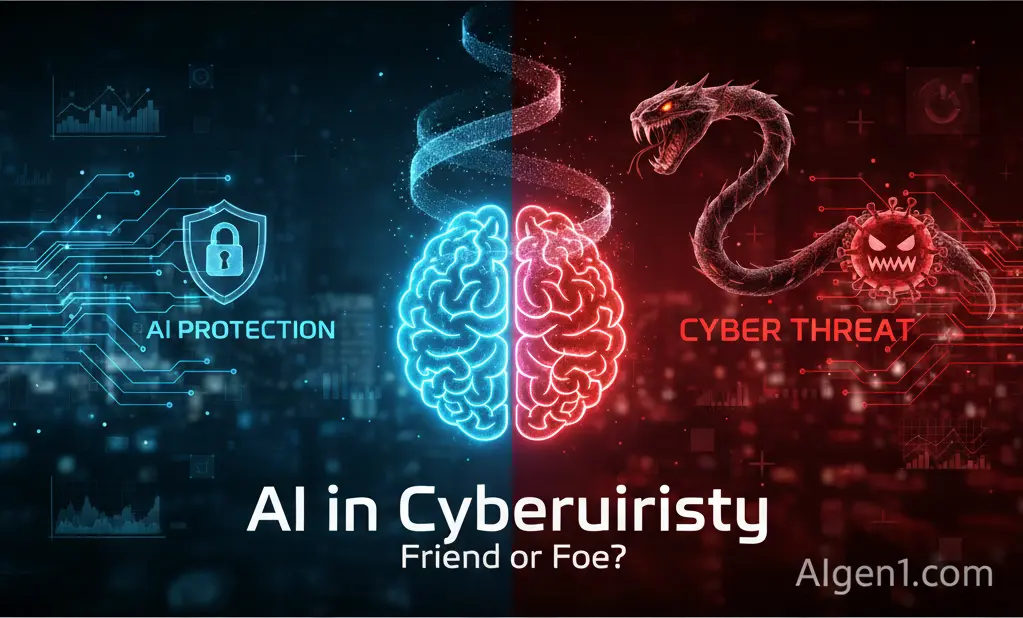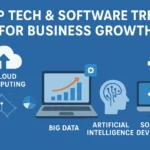Table of Contents
Introduction
Cybersecurity has become one of the most important challenges in our digital world. With the rise of data breaches, hacking, and online fraud, organizations need smarter solutions to stay secure. One of the most powerful tools shaping this field is AI in Cybersecurity. Also known as Artificial Intelligence in Cybersecurity, AI is transforming the way companies detect, prevent, and respond to digital threats. But the big question remains: is AI in cybersecurity a friend or foe?
In this article, we will explore how AI is used in cyber defense, its benefits, risks, and what the future holds for AI-powered security. For insights into how AI is transforming other sectors, check out our article on Healthcare AI: Revolutionizing Diagnosis and Treatment.
What is AI in Cybersecurity?
Cybersecurity AI involves deploying machine learning algorithms, data analysis tools, and automated processes to identify and counteract digital security threats. In contrast to conventional security approaches that depend on human oversight and manual intervention, artificial intelligence systems possess the ability to:
- Identify unusual patterns in network activity
- Detect malware or phishing attacks in real-time
- Predict potential cyber risks before they occur
This makes AI cybersecurity tools faster and more effective in handling the massive amount of data created every second online.

Benefits of AI in Cybersecurity
1. Faster Threat Detection
Artificial intelligence systems have the capability to analyze vast amounts of data—millions of data points—in mere seconds. This means cyberattacks can be detected earlier, reducing the risk of major damage.
2. Predictive Security
Using machine learning models, AI can predict possible threats by analyzing past attack patterns. This proactive approach helps prevent attacks before they even start.
3. Reduced Human Error
Cybersecurity professionals often face fatigue due to constant monitoring. AI can handle repetitive tasks, reducing mistakes and allowing humans to focus on complex issues.
4. Real-Time Response
Unlike traditional systems that may take hours to respond, AI can instantly isolate infected devices, block suspicious traffic, and protect sensitive data.
5. Cost Efficiency
While AI tools require investment, they help reduce long-term costs by preventing expensive data breaches and minimizing downtime.
Risks and Challenges of AI in Cybersecurity
While AI is a powerful ally, it also brings challenges that cannot be ignored.
1. AI-Powered Cyberattacks
Cybercriminals are leveraging artificial intelligence to develop increasingly sophisticated attack methods. For example, AI can generate deepfake phishing emails or automate hacking attempts, making them harder to detect.
2. Dependence on Data
AI systems rely on massive amounts of data to work effectively. If the data is biased, incomplete, or corrupted, the system may fail to detect real threats.
3. False Positives
Sometimes, AI flags safe activities as suspicious. These false alarms can waste time and create unnecessary panic.
4. High Costs for Implementation
Advanced AI security systems can be expensive, making it difficult for small businesses to adopt them.
5. Ethical and Privacy Issues
Since AI requires access to large amounts of user data, it raises concerns about digital privacy and responsible use.
AI in Cybersecurity: Friend or Foe?
The role of Artificial Intelligence in cybersecurity is a double-edged sword. On one hand, AI provides unmatched speed, efficiency, and accuracy in defending against cyber threats. Conversely, malicious actors can harness this identical technology to launch more devastating cyber assaults.
The answer depends on how we use AI. With proper regulation, ethical practices, and human oversight, AI is more of a friend than a foe. However, ignoring the risks could turn AI into a dangerous tool in the wrong hands.
Real-World Applications of AI in Cybersecurity
1. Threat Detection Systems
Companies like Microsoft and IBM use AI-based systems to detect malware and ransomware attacks faster than traditional methods.
2. Fraud Prevention in Banking
Banks use AI to analyze transactions and detect unusual spending patterns that could indicate fraud.
3. Identity Verification
AI is used in biometric authentication (face recognition, fingerprint scans) to secure devices and online accounts.
4. Cloud Security
As businesses move to the cloud, AI helps secure cloud environments by monitoring unusual login attempts and preventing unauthorized access.
The Future of Artificial Intelligence in Cybersecurity
The future of Artificial Intelligence in cybersecurity looks promising. With the rise of quantum computing, IoT, and 5G networks, security challenges will grow more complex. AI will play a key role in:
- Automated cyber defense systems
- Smarter firewalls and intrusion detection
- Self-learning security tools that adapt in real-time
- Hybrid AI-human teams for better decision-making
While AI cannot completely replace human experts, it will continue to act as a powerful partner in fighting cybercrime.
Conclusion
AI is both a powerful ally and a potential threat in the world of cybersecurity. It has the power to revolutionize cyber defense by offering real-time protection, predictive analytics, and automated responses. But it also comes with risks, including AI-driven attacks and ethical challenges.
The key lies in responsible use, continuous updates, and strong human oversight. When used wisely, Artificial Intelligence in Cybersecurity will remain one of the strongest allies in protecting our digital future.
Frequently Asked Questions (FAQ)
Q1. What is AI in Cybersecurity?
AI in cybersecurity refers to the use of artificial intelligence technologies such as machine learning, data analytics, and automation to detect, prevent, and respond to cyber threats.
Q2. How does AI help in cybersecurity?
AI helps by analyzing large amounts of data, detecting suspicious patterns, predicting threats, and responding to attacks faster than humans.
Q3. What are the risks of using AI in cybersecurity?
Risks include AI-powered cyberattacks, false positives, high costs, and ethical concerns about privacy and data usage.
Q4. Is AI in cybersecurity suitable for small businesses?
Yes, many affordable AI-based security tools are available for small businesses. However, advanced systems may be costly.
Q5. Will AI replace human cybersecurity experts?
No, AI will not fully replace humans. Instead, it will support professionals by handling repetitive tasks and enhancing decision-making.
For more on AI advancements, explore McKinsey’s AI Insights.



